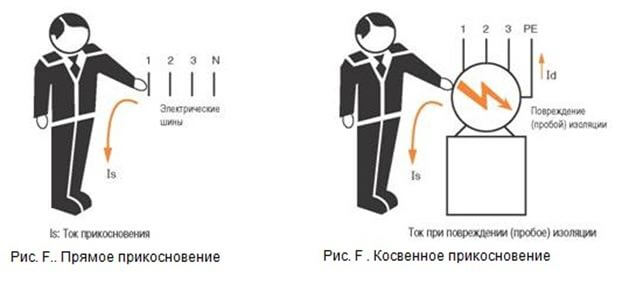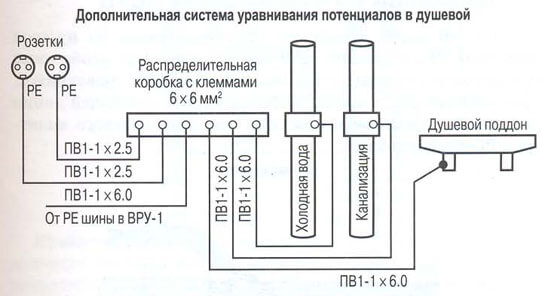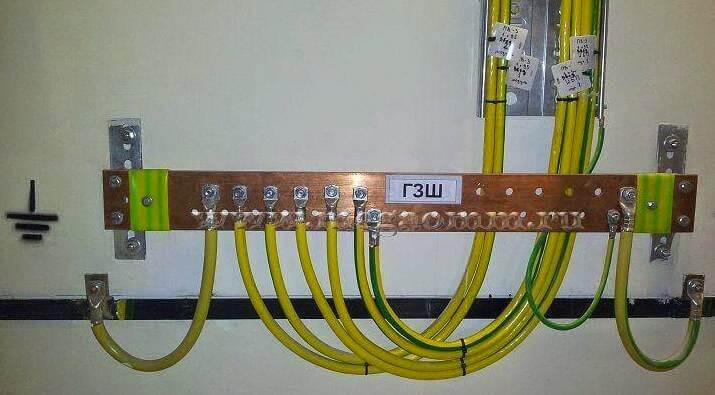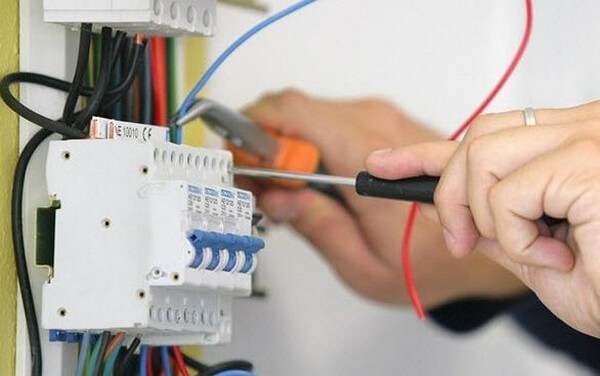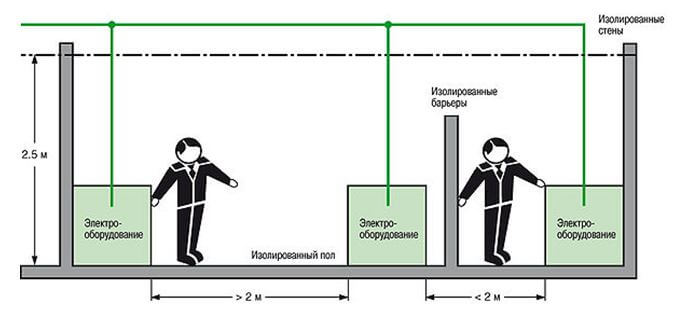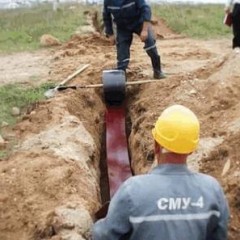Indirect Touch Protection
In order to protect against such a phenomenon, there are certain security measures. And if protection is needed, then these measures are used either individually and separately, or several at once:
- equalization of potentials;
- protective grounding;
- protection by separation of electric circuits;
- small (very low) voltage;
- double insulation;
- automatic power off;
- separating platforms and zones.
Equalization of potentials. If electrical installations in quantities of two or more are connected to the same electrical network, then they must be properly grounded. For example, a connection is considered incorrect when a certain number of plant enclosures are grounded without combining an earthing switch with a PE conductor, and the rest of the electrical enclosures with a PE conductor. This is considered a serious violation, since as a result of a phase closure on the case, which is grounded by an individual earthing switch, the null cases will be energized relative to the ground.
Such protection will be energized, and this is very dangerous. In order to avoid this, there is equalization of potentials. For its implementation, it is necessary to combine the conductive parts of electrical equipment. This is how protection takes place, and the potentials will be the same and an indirect touch will not be dangerous.
In electrical installations up to 1000 V, in accordance with the PUE, the combination of the neutral PEN conductor with the grounding conductor occurs with a secondary grounding device at the entrance to the room. Metal communication pipes that conduct parts of the building frame, ventilation and air conditioning systems, as well as telecommunication cable sheaths are connected to this mechanism. Conductors from all this are connected to the main grounding bus. About, how to make a potential equalization system, we told in a separate article!
Equalization of potentials also helps to protect against this phenomenon. Thanks to protective conductors lowers step voltage on a surface. Such conductors are laid on the surface and connected to a grounding device.
Another protective measure for indirect contact is protective grounding. This is the connection of the conductive part of the installation or equipment to the grounding device. Due to such actions in grounded parts, the voltage will decrease to a safe level.Such precautions allow a person to avoid such a thing as an indirect touch.
The next way is protection by separation of electrical circuits. Such an action is usually applied on electrical installations up to 1000 V (for example, in an isolation transformer). In this case, the parts of the equipment that conduct the current are pulled individually from the other circuits. If, nevertheless, an accidental touch occurs, then the victim is able to defend himself, since a small current will pass through his body to the ground.
Protection against indirect contact is also possible with low voltage. Measures to apply this method allow you to abandon protective grounding, in addition to the forced association of high voltage devices. Protection takes place as follows: low voltage circuits are disconnected from high voltage circuits.
Indirect contact in mobile electrical installations up to 1000 V can be avoided with double insulation. Protection takes place as follows: the main insulation is protected by additional independent insulation and if this additional insulation is damaged, the main one remains protected.
Another protection option is by turning the power off with a residual current device. Precautions during such a shutdown will allow to de-energize the equipment. This action can be applied in residential buildings. RCD tripswhen the electrical parameters in the circuit change when a person touches the live part.
Well, the last thing to use is the separating platforms and zones. Indirect touch can be avoided with the help of insulating pads and barriers, indoor surfaces. This option is used when in electrical installations up to 1000 V there is no grounding.
So we examined the basic protection measures with an indirect touch. For a more detailed study of the issue, we recommend that you read chapter 1.7 of the PUE (clause 1.7.76 -1.7.87.).
It will be useful to read:

